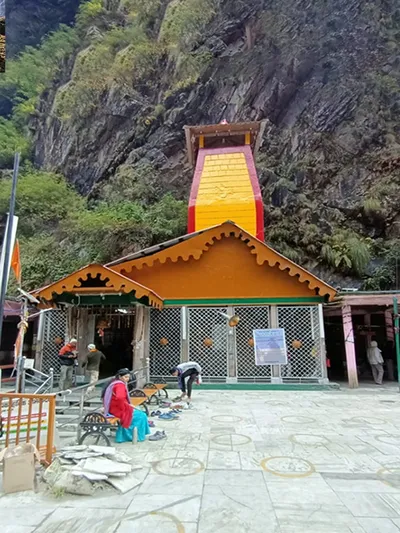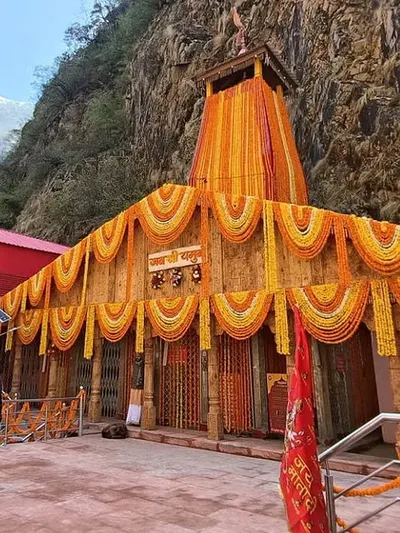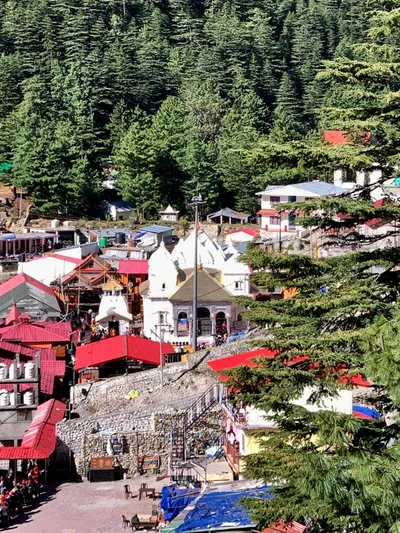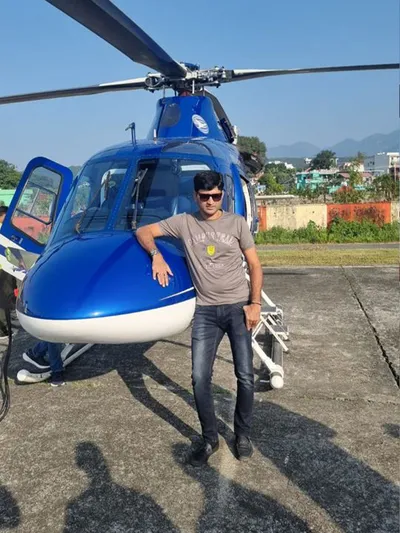
Demographics of Yamunotri

Located at a high altitude in the Uttarkashi district of Uttarakhand, Yamunotri is a hugely revered place. Dedicated to Goddess Yamuna, it is also a part of the Char Dham circuit. Thousands of devotees step on this Devbhoomi every year to seek blessings from the presiding deity. And as vibrant as the tourist scene is, equally interesting are the lives of the local people who inhabit this remote region. Let’s understand the population here on a deeper level and understand the Yamunotri demographics of the region, shall we?
Fast Facts about Yamunotri Demographics
Here are some quick facts about the Dham:
- The primary population here is that of the local tribes that inhabit this region.
- The overall population growth rate has been recorded to be of 11.75% as per the census, 2011.
- The sex ratio of Uttarkashi district has been recorded to be 959 females for every 1,000 males.
- People earn their livelihood by offering various types of services to the pilgrims visiting the temple.
General Yamunotri Demographics
Diving deep into the demographics of Yamunotri, let’s see the Dham under a magnifying glass!
1. Permanent Population
Yamunotri is a small hamlet with a very tiny year-round population – only 500 people. The permanent population here is primarily of those whose ancestors have lived here for generations. These mainly comprise Garhwali locals and Bhotiya tribes.
However, during winters (November to April), this population also migrates to the nearby village of Harsil, Kharsali, and Hanuman Chatti. The whole town gets blanketed with a thick cover of snow, and the cold is too unbearable that most inhabitants evacuate and move to lower altitudes. The Yamunotri Temple is closed as well.
Although the migration is temporary, it affects the demographic continuity of the Dham.
2. Seasonal Demographics (Pilgrimage Season)
Come the pilgrimage season (May to June and September to October), the demographics of the Yamunotri Dham see a significant uptick. As the Char Dhams open, thousands of devotees from all over the country visit the temple, increasing the temporary population significantly. As per the data, about 1000 to 5,000 devotees visit the temple daily during the peak pilgrimage months.
And that’s not all, other people from nearby villages visit Yamunotri too in order to milk the booming tourist industry here. Porters, mule owners, priests, small hoteliers, and even shopkeepers move to the Dham area. These people are mainly from areas like Barkot, and even from far places like Dehradun.
During this short span of time, Yamunotri completely transforms from a quiet, humble town to a vibrant, bustling pilgrimage hotspot – dramatically changing its economic as well as social makeup.
3. Ethnic Composition and Spoken Languages
The primary ethnic group that resides in Yamunotri is the Garhwali people. They mostly speak Garhwali and Hindi, with the latter being especially useful to converse with the tourists during the pilgrimage season. Sanskrit is also spoken, but mainly for the priestly work and rituals.
Another significant group that lives here is the Bhotiya community which is believed to be of Tibetan origin. Initially, they were into trans-Himalayan trade, but later on delved into tourism, agriculture, and even religious services. They also introduced woollen textiles and hand-woven garments to the hilly markets.
4. Literacy Rate
The overall literacy rate of the Uttarkashi district is about 75%. However, the rate for Yamunotri is significantly different owing to a very limited number of educational facilities. Local children go to Barkot for school or migrate seasonally to other villages along with their families.
5. Occupation Dynamics
Just like in most of the Uttarakhand region, the female population is mostly invested in agricultural-related activities, while men are more into the tourism sector.
You’ll find women here engaged in local farming, livestock management, and maintaining households. And during the peak pilgrimage season, they prepare food and run Dhabas.
Men, on the other hand, take on the work of mule/horse management, accommodation operations, Palki carrying services, tour guides, etc.
The main livelihood centres around the pilgrimage season, with little to no option for full-time jobs as there’s limited infrastructure, a lack of opportunities, and a harsh climate.
6. Priest Community
There’s also a priest community in the region, which is hardly surprising considering the huge religious significance of the place. The priest families here belong to the Uniyal Brahmin community and mainly engage in temple rituals.
However, they don’t live here on a permanent basis. They mainly belong to the Kharsali Village, the winter seat of Goddess Yamuna. And during the Yatra season, they migrate here to carry out the tasks of daily puja and Aarti.
The more you understand the Yamunotri demographics, the more you’ll find it to be culturally enriched, vibrant, and diverse. From farmers to tour guides, the occupations here come in a load of variety. Whether it’s the seasonal horde of priests or the rather permanent Garhwali people, the population here is truly as varied as it can be.
Knowing local people, their culture, and their demographics can add a dimension to your pilgrimage and can enrich your journey like no other!

















